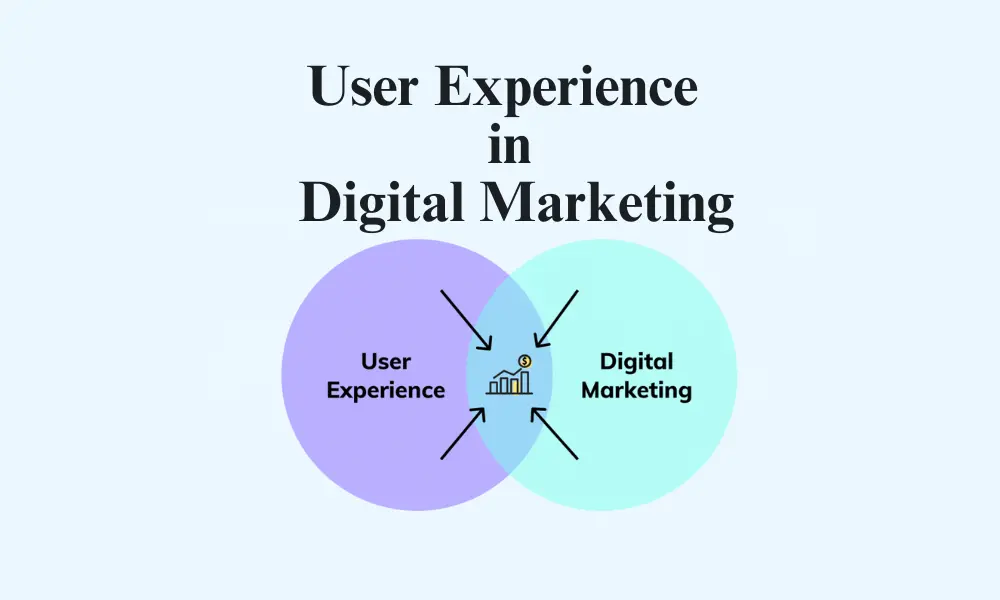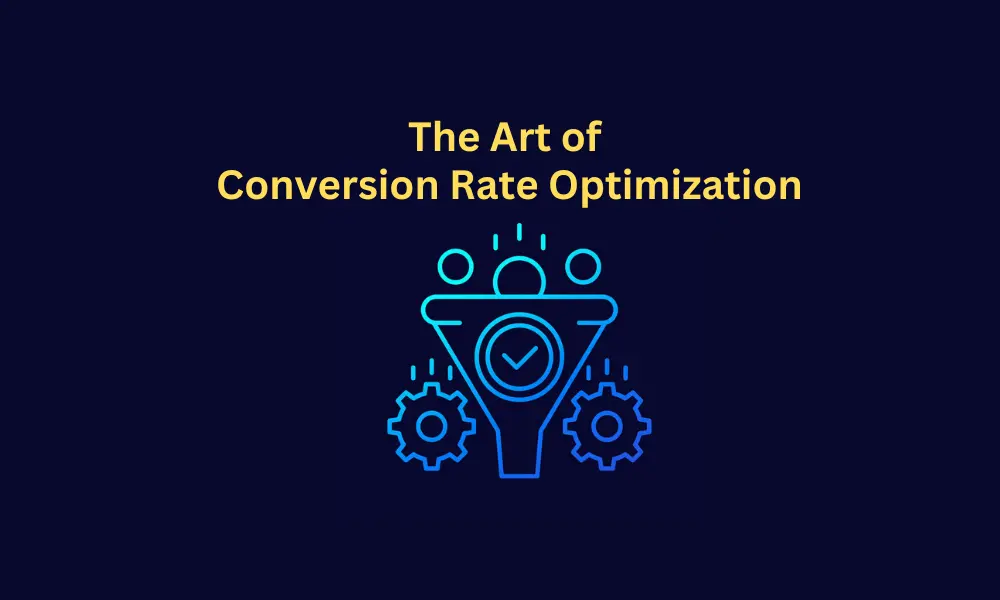The Importance of User Experience in Digital Marketing
User Experience (UX) plays a crucial role in digital marketing, encompassing the overall experience a user has while interacting with a website, app, or digital platform. In today’s competitive digital landscape, prioritizing UX is not just beneficial but essential for businesses aiming to succeed online.
Table of contents

Key Elements of User Experience
Website Design and Navigation
Intuitive layouts and easy navigation are crucial for a positive user journey, as they help users find information effortlessly. Responsive design, adapting to different devices, enhances user engagement and satisfaction by providing a seamless experience across platforms. Clear labeling, logical menu structures, and intuitive UI elements contribute to user satisfaction and reduce bounce rates.
Content Quality and Relevance
High-quality and relevant content plays a pivotal role in enhancing user experience by meeting user expectations and addressing their needs. Valuable content not only informs but also persuades users, leading to increased conversions and customer loyalty. Multimedia content, such as videos and infographics, enriches user engagement by providing diverse and engaging formats.

Page Load Speed and Performance
Fast-loading pages are crucial in reducing bounce rates and keeping users engaged, as slow loading times can frustrate users and lead to abandonment. Optimizing page speed and performance metrics, such as server response time and resource caching, improves user experience and SEO rankings.
Mobile Responsiveness
Mobile-friendly designs are essential for catering to the increasing mobile audience, providing a seamless experience across devices. Responsive design adapts content and layout to different screen sizes, ensuring readability and usability on smartphones and tablets. Mobile optimization includes touch-friendly elements, optimized media, and streamlined navigation for improved user experience.
Accessibility and Inclusivity
Accessibility focuses on making digital assets usable by all users, including those with disabilities, through features like screen readers and alternative text. Inclusivity in design ensures that diverse user groups can access and interact with content effectively, promoting a positive brand image and customer satisfaction.
Impact of User Experience on Digital Marketing
Enhancing UX directly contributes to various aspects of digital marketing success:

| Impact of UX on Digital Marketing | Explanation |
| Increased Conversion Rates | When users have a seamless and intuitive experience on a website or app, they are more likely to complete desired actions like making a purchase, signing up, etc. This leads to higher conversion rates and improved return on investment (ROI). |
| Improved Customer Satisfaction | Positive UX leads to greater customer satisfaction as users find it easier to navigate, find information, and accomplish tasks. Satisfied customers are more likely to return and become loyal to the brand, contributing to long-term success. |
| Higher Engagement and Reduced Bounce Rates | Engaging UX elements such as interactive features, personalized content, and clear calls-to-action keep users engaged and interested, reducing bounce rates and increasing time spent on the site. |
| Positive Brand Perception | Good UX contributes to a positive brand image by providing a consistent, reliable, and enjoyable experience. This helps build trust, encourages repeat business, and generates positive word-of-mouth referrals, enhancing overall brand perception. |
User Experience Optimization Strategies

- Conducting UX Audits and Research
- Importance of understanding user behavior through analytics and feedback.
- Conducting usability tests and surveys for actionable insights.
- Implementing Responsive Web Design
- Adapting designs for different devices and screen sizes.
- Prioritizing mobile-first approaches for optimal user experiences.
- Creating High-Quality Content
- Focusing on user-centric content that addresses audience needs and pain points.
- Incorporating SEO strategies without compromising user experience.
- Enhancing Website Performance
- Optimizing page load times, server response, and overall site performance.
- Utilizing caching, content delivery networks (CDNs), and image compression techniques.
- Prioritizing Accessibility and Inclusivity
- Ensuring compliance with accessibility standards (WCAG) for diverse user needs.
- Designing with empathy to create inclusive experiences for all users.
Challenges in Enhancing User Experience

1. Balancing UX with Technical Constraints: Striking a balance between optimal user experience and technical limitations such as platform compatibility and device responsiveness.
2. Addressing User Feedback and Iterative Improvements: Incorporating user feedback into design iterations, ensuring continuous enhancement based on user insights and preferences.
3. Ensuring Consistency Across Platforms: Maintaining a consistent audience experience across various devices, browsers, and screen sizes for seamless interaction.
4. Optimizing Performance Without Compromising UX: Improving website speed and performance while ensuring a smooth and engaging UX without sacrificing functionality.
5. Accessibility and Inclusivity: Ensuring that the user experience is accessible to all users, including those with disabilities, by adhering to accessibility standards and guidelines.
Conclusion
User Experience is not just a buzzword but a critical factor in digital marketing success. Prioritizing UX leads to happier users, better conversion rates, and a stronger brand presence. Incorporating UX strategies should be a cornerstone of every digital marketing strategy.
Read more: The Art of Conversion Rate Optimization
FAQS
UX is crucial as it directly impacts customer satisfaction, engagement, and conversion rates on digital platforms.
A positive UX leads to increased conversions by making it easier for users to navigate, find information, and complete desired actions.
Mobile-friendly designs ensure a seamless experience across devices, catering to the growing mobile audience and improving customer satisfaction.
Accessibility ensures that all users, including those with disabilities, can access and interact with digital content effectively, promoting a positive brand image.

Alex Mitch
Welcome to my blog! With over 10 years in digital marketing , I’ve seen its incredible impact on smaller businesses. Join me as we explore how digital marketing can grow your audience and boost your business. Whether you’re an experienced entrepreneur or just starting out, you’ll find practical tips and insights to enhance your digital marketing strategies.
The Art of Conversion Rate Optimization
Conversion Rate Optimization (CRO) is an essential digital marketing strategy aimed at increasing the percentage of website visitors who take a desired action. Whether it’s making a purchase, filling out a form, or subscribing to a newsletter, CRO is about fine-tuning your website to convert more visitors into customers. But why is it so crucial, and how can you master this art? Let’s dive in.

What is Conversion Rate Optimization?
Conversion Rate Optimization is the process of enhancing your website to boost the likelihood of visitors performing specific actions. This could involve adjusting your website design, improving your content, or refining your call-to-actions (CTAs).
Why Marketers Rely on CRO
Marketers rely on Conversion Rate Optimization (CRO) because it helps maximize the effectiveness of their marketing efforts. By focusing on improving conversion rates, marketers can increase the number of leads or sales generated from their existing traffic. This is crucial for optimizing return on investment (ROI) and making the most of limited marketing budgets.

CRO also allows marketers to gain insights into customer behavior and preferences, enabling them to tailor their strategies for better engagement and conversions. Overall, CRO plays a vital role in driving growth, improving customer experience, and achieving business objectives in a competitive digital landscape.
Steps to Effective Conversion Rate Optimization

Analyzing Current Performance
Tools like Google Analytics and Hotjar can provide insights into visitor behavior, highlighting areas where improvements are needed. Set clear, measurable goals for what you want to achieve with your CRO efforts.
Understanding Your Audience
Develop detailed profiles of your ideal customers to better tailor your website experience to their needs. Gather feedback directly from your users to understand their pain points and preferences.
Improving User Experience (UX)
Ensure your website is easy to navigate, with a clear path to conversion. Fast-loading pages reduce bounce rates and improve the overall user experience.
Optimizing Content
Your call-to-actions should be clear, enticing, and strategically placed. Experiment with different headlines, images, and CTAs to see what resonates best with your audience.
Leveraging Social Proof
Positive feedback from existing customers can build trust and encourage conversions. Trust badges and certifications can reassure visitors of your website’s security and credibility.
Key Metrics in CRO

Conversion Rate: This metric indicates the percentage of visitors who take the desired action, such as making a purchase or signing up for a newsletter. A higher conversion rate signifies better engagement and performance of your website.
Bounce Rate: This measures the percentage of visitors who leave your site after viewing only one page. A high bounce rate could indicate issues with user experience, content relevance, or website load speed, impacting overall conversion rates.
Average Session Duration: This metric reflects the average time visitors spend on your site. A longer duration often indicates engagement and interest in your content, potentially leading to higher conversion rates. It’s crucial for understanding user behavior and optimizing website content and navigation.
Why We Need Conversion Rate Optimization
There are numerous reasons marketers have to rely on conversation rate optimization.
| Reasons for Conversion Rate Optimization | Explanation |
| Maximizing Marketing ROI | By optimizing your conversion rate, you get more value from your marketing efforts, ensuring that your investment translates into actual sales and growth. |
| Enhancing User Experience | CRO focuses on making your website more user-friendly, which can lead to higher customer satisfaction and retention. |
| Staying Competitive | In today’s digital landscape, staying ahead of the competition means continuously improving your website’s performance and conversion rates. |
| Reducing Acquisition Costs | Effective CRO can lower your customer acquisition costs by converting more of your existing traffic, reducing the need to spend more on attracting new visitors. |
| Building Customer Trust | A well-optimized website that meets customer needs effectively can enhance your brand’s reputation and build long-term trust with your audience. |
Conclusion
Mastering the art of Conversion Rate Optimization is crucial for any business looking to thrive in the digital age. By understanding your audience, analyzing your current performance, and continuously refining your website, you can significantly boost your conversion rates and drive business growth. Remember, CRO is an ongoing process that requires regular attention and adaptation.
Read more : Trends and Predictions for the Digital Landscape in 2024
FAQs
The main goal of CRO is to increase the percentage of website visitors who take a desired action, such as making a purchase or filling out a form.
Success can be measured using key metrics such as conversion rate, bounce rate, and average session duration. Tools like Google Analytics can provide detailed insights.
Common strategies include improving website design, enhancing content, conducting A/B testing, and leveraging social proof through testimonials and reviews.
CRO is an ongoing process. Regular updates and testing are essential to keep up with changing user behavior and industry trends.

Alex Mitch
Welcome to my blog! With over 10 years in digital marketing , I’ve seen its incredible impact on smaller businesses. Join me as we explore how digital marketing can grow your audience and boost your business. Whether you’re an experienced entrepreneur or just starting out, you’ll find practical tips and insights to enhance your digital marketing strategies.
Trends and Predictions for the Digital Landscape in 2024
The digital landscape is constantly evolving, bringing new technologies and innovations that shape our daily lives and business operations. As we look ahead to 2024, it’s crucial to stay informed about the latest trends and predictions to remain competitive and forward-thinking. So, what can we expect in the coming year?

Table of contents
AI and Machine Learning
First, let’s talk about AI and machine learning. These technologies are advancing rapidly, with applications in healthcare, finance, marketing, and beyond. AI is becoming more sophisticated, enabling businesses to analyze vast amounts of data, automate processes, and provide personalized experiences to customers. Moreover, machine learning algorithms are improving, making it possible to predict trends and behaviors with unprecedented accuracy.

5G Technology
Next, 5G technology is set to revolutionize how we connect and communicate. With its faster speeds and lower latency, 5G will enhance everything from streaming services to smart cities. Businesses will benefit from more reliable and efficient communication networks, while consumers will enjoy seamless online experiences. As 5G networks expand globally, the possibilities are endless.

Augmented Reality (AR) and Virtual Reality (VR)
AR and VR are no longer just buzzwords; they are transforming various sectors. In entertainment, AR and VR provide immersive experiences, from gaming to virtual concerts. Education is also benefiting, with virtual classrooms and interactive learning tools becoming more prevalent. As these technologies continue to mature, their applications will expand, offering new ways to engage and educate.
| Sector | Transformation through AR and VR |
| Entertainment | AR and VR provide immersive experiences in gaming, virtual concerts, and movie experiences, creating a more engaging and interactive environment. |
| Education | Virtual classrooms and interactive learning tools enhance the learning experience, making it more engaging and effective by providing realistic simulations and hands-on practice. |
| Healthcare | AR and VR are used for medical training, patient treatment, and therapy, offering new ways to visualize complex surgeries and enabling remote consultations. |
| Retail | These technologies allow customers to try products virtually before buying, improving the shopping experience and increasing sales by reducing return rates. |
| Real Estate | Virtual tours and AR-enhanced property views enable potential buyers to explore properties remotely, making the property search process more efficient and accessible. |
Blockchain and Cryptocurrencies
Blockchain technology is making strides, offering secure and transparent ways to conduct transactions. Cryptocurrencies, once seen as niche, are gaining mainstream acceptance. More businesses are adopting blockchain for supply chain management, financial services, and even voting systems.

The decentralized nature of blockchain ensures security and trust, making it a valuable asset in the digital age.
Immutable Ledger: Blockchain maintains an immutable ledger of transactions, ensuring transparency and trust.
Decentralization: Operating on a decentralized network, blockchain eliminates intermediaries, reducing costs and enhancing efficiency.
Smart Contracts: These self-executing contracts automate processes, ensuring agreements are fulfilled without intermediaries.
Cryptocurrency Adoption: Bitcoin and Ethereum are gaining mainstream acceptance, offering fast, secure, and low-cost transactions globally.
Cybersecurity
In our increasingly digital world, cybersecurity is more critical than ever. With the rise of cyber threats, from phishing attacks to ransomware, businesses must prioritize robust security measures. Innovations in cybersecurity, such as AI-driven threat detection and zero-trust architecture, are helping to mitigate risks. Staying vigilant and updated on the latest security trends is essential to protect sensitive data.

E-commerce and Online Shopping
E-commerce is booming, with more consumers shopping online than ever before. Innovative platforms and technologies are enhancing the online shopping experience, from personalized recommendations to virtual try-ons.
Businesses are leveraging AI and data analytics to understand consumer behavior and optimize their offerings. As e-commerce continues to grow, the focus will be on creating seamless and engaging shopping experiences.
Sustainable Technology
Sustainability is becoming a key focus in technology development. Companies are investing in eco-friendly solutions, from renewable energy to green computing. The push for sustainability is driven by both consumer demand and regulatory pressures. As we move forward, sustainable technology will play a crucial role in addressing environmental challenges and promoting a greener future.
Edge Computing
Edge computing is gaining traction as an alternative to traditional cloud computing. By processing data closer to the source, edge computing reduces latency and enhances real-time decision-making. This is particularly valuable for IoT devices and applications requiring instant responses. As edge computing technology advances, it will offer new possibilities for faster and more efficient data processing.

Internet of Things (IoT)
The Internet of Things (IoT) continues to expand, with more devices becoming interconnected. From smart homes to industrial automation, IoT is transforming how we live and work. These devices collect and share data, enabling improved efficiency and convenience. As IoT technology evolves, its impact will be felt across various sectors, enhancing productivity and innovation.

Conclusion
In conclusion, navigating the digital landscape in 2024 requires staying informed and adaptable. From AI advancements to the growth of e-commerce, the trends and predictions outlined above highlight the exciting possibilities and challenges ahead. By embracing these changes and investing in innovative solutions, businesses and individuals can thrive in the digital landscape. So, are you ready to embrace the future?
Read more : Maximizing ROI with PPC Campaigns
Read more : Power of AI in Customer Engagement for Furniture Stores
FAQs
AI will continue to advance, offering more sophisticated solutions for various industries, from healthcare to finance. It will enable better data analysis, automation, and personalized experiences.
5G will enhance connectivity with faster speeds and lower latency, improving everything from streaming to smart city applications. It will offer more reliable communication networks for both businesses and consumers.
Hybrid work models offer flexibility, combining remote and in-office work. They improve work-life balance, increase productivity, and provide access to a wider talent pool.
With the rise of digital threats, robust cybersecurity measures are essential to protect sensitive data and prevent attacks. Innovations like AI-driven threat detection are crucial in mitigating risks.

Alex Mitch
Welcome to my blog! With over 10 years in digital marketing , I’ve seen its incredible impact on smaller businesses. Join me as we explore how digital marketing can grow your audience and boost your business. Whether you’re an experienced entrepreneur or just starting out, you’ll find practical tips and insights to enhance your digital marketing strategies.
Maximizing ROI with PPC Campaigns
Return on Investment (ROI) is a critical metric for any business, as it measures the profitability of investments. In the realm of digital marketing, Pay-Per-Click (PPC) campaigns are a powerful tool to drive traffic, generate leads, and ultimately, boost ROI. So, how can you maximizing ROI with PPC campaigns? Let’s delve into the intricacies of PPC and uncover strategies to enhance your investment returns.

Understanding PPC Campaigns
First and foremost, what exactly is PPC? Pay-Per-Click is an online advertising model where advertisers pay a fee each time their ad is clicked. Essentially, it’s a way of buying visits to your site, rather than attempting to “earn” those visits organically. Key components of PPC include keywords, ad copy, landing pages, and bid management.

Setting Clear Objectives
To maximize ROI, you must set clear objectives for your PPC campaigns. Start by defining your goals: Are you looking to increase website traffic, generate leads, or boost sales? Align these goals with your broader business objectives to ensure coherence and effectiveness.
Choosing the Right Platform
Selecting the appropriate platform is crucial. Google Ads is the most popular choice, offering extensive reach and robust tools. Bing Ads, though less ubiquitous, can provide a cost-effective alternative with a different audience. Social media platforms like Facebook, Instagram, and LinkedIn also offer PPC options, allowing you to target specific demographics.

| Point | Explanation |
| Google Ads | Google Ads is the most popular choice for PPC campaigns. It offers extensive reach, robust tools, and detailed analytics, making it ideal for businesses looking to target a broad audience. |
| Bing Ads | Although less ubiquitous than Google Ads, Bing Ads can be a cost-effective alternative. It reaches a different audience and often has lower competition, potentially reducing CPC (cost per click). |
| Facebook Ads | Facebook Ads allows for highly targeted campaigns based on user demographics, interests, and behaviors. It is especially effective for businesses aiming to engage with a specific community or interest group. |
| Instagram Ads | Integrated with Facebook, Instagram Ads leverage visual content to engage users. This platform is perfect for brands with strong visual elements, targeting younger demographics. |
| LinkedIn Ads | LinkedIn Ads are optimal for B2B marketing, enabling precise targeting of professionals based on job title, industry, and company size. It is a great choice for businesses seeking professional or corporate audiences. |
Keyword Research
Keywords are the foundation of any PPC campaign. Thorough keyword research ensures that your ads appear to the right audience. Utilize tools like Google Keyword Planner, SEMrush, or Ahrefs to discover relevant keywords with high search volume and low competition. Remember, the right keywords can significantly impact your ROI.
Creating Compelling Ad Copy
Crafting compelling ad copy is an art. Your headlines should be attention-grabbing, while the descriptions need to be persuasive. Highlight unique selling points, use action verbs, and include a strong call-to-action (CTA). Effective ad copy not only attracts clicks but also drives conversions.
Designing Landing Pages
The landing page is where the magic happens. It’s crucial that your landing pages are designed to convert visitors into customers. Ensure they are relevant to the ad, load quickly, and are mobile-friendly. Key elements of a high-converting landing page include a clear headline, concise content, strong CTA, and user-friendly design.
Budget Management
Effective budget management is essential for maximizing ROI. Start by setting a realistic budget based on your goals and financial capacity. Monitor your spend closely to avoid overspending. Tools like Google Ads’ budget planner can help you track and manage your budget efficiently.

Bid Strategies
Choosing the right bid strategy can make a significant difference. You can opt for manual bidding, where you control the cost per click, or automated bidding, where the platform optimizes bids to achieve your goals. Consider your campaign objectives, budget, and experience level when selecting a bid strategy.
Tracking and Analytics
Tracking and analytics are paramount for measuring the success of your PPC campaigns. Tools like Google Analytics, Google Ads, and third-party solutions provide insights into performance metrics such as CTR, conversion rate, and cost per conversion. These insights are invaluable for making informed decisions.
Common Mistakes to Avoid

Even seasoned marketers can make mistakes in PPC campaigns. Avoid overlooking mobile optimization, as a significant portion of users access ads via mobile devices. Ignoring negative keywords can also lead to wasted spend on irrelevant clicks. Stay vigilant and proactive in addressing these common pitfalls.
Conclusion
Maximizing ROI with PPC campaigns requires a strategic approach, from setting clear objectives and choosing the right platform to conducting thorough keyword research and continuous optimization. By implementing these best practices, you can ensure that your PPC efforts drive substantial returns on your investment.
Read more : The Rise of Influencer Marketing: How to Partner with Influencers
FAQs
PPC, or Pay-Per-Click, is an online advertising model where advertisers pay a fee each time their ad is clicked, essentially buying visits to their site.
Set a budget based on your campaign goals and financial capacity. Use tools like Google Ads’ budget planner to monitor and manage you spend effectively.
Effective strategies include thorough keyword research, compelling ad copy, optimized landing pages, proper budget management, and continuous A/B testing and optimization.
Utilize tracking and analytics tools like Google Analytics and Google Ads to monitor performance metrics such as CTR, conversion rate, and cost per conversion.

Alex Mitch
Welcome to my blog! With over 10 years in digital marketing , I’ve seen its incredible impact on smaller businesses. Join me as we explore how digital marketing can grow your audience and boost your business. Whether you’re an experienced entrepreneur or just starting out, you’ll find practical tips and insights to enhance your digital marketing strategies.
The Rise of Influencer Marketing: How to Partner with Influencers
In recent years, influencer marketing has emerged as a powerful strategy for brands looking to reach new audiences and increase their visibility. This blog will explore the rise of influencer marketing, how to effectively partner with influencers, and provide actionable steps for your business to leverage this trend. We’ll conclude with a summary and answer some frequently asked questions.

Table of contents
Understanding Influencer Marketing
Influencer marketing involves collaborating with individuals who have a significant and engaged following on social media platforms. These influencers can sway the purchasing decisions of their followers due to their authority, knowledge, position, or relationship with their audience.

Types of Influencers
Mega-Influencers: These are famous celebrities and social media personalities who have millions of followers, making them highly visible and impactful in the influencer marketing space.
Macro-Influencers: They are professionals and thought leaders with follower counts ranging from 100,000 to 1 million, often focusing on specific industries or expertise areas, providing a balance between reach and engagement.

Micro-Influencers: These influencers have follower counts between 10,000 to 100,000, known for their expertise in niche topics and high engagement rates within their dedicated communities.
Nano-Influencers: Everyday consumers with follower counts ranging from 1,000 to 10,000, valued for their authenticity, strong connections with their followers, and ability to influence smaller, targeted audiences effectively.
The Rise of Influencer Marketing
Influencer marketing has seen exponential growth due to several factors:
| Factor | Explanation |
| Trust and Authenticity | Consumers trust recommendations from individuals more than from brands. Influencers are seen as relatable and genuine. This trust translates into purchasing decisions. |
| Engagement Rates | Influencers often achieve higher engagement rates compared to brand accounts. Their content resonates more with their audience. This results in more interactions and visibility. |
| Targeted Reach | Brands can effectively reach specific demographics through influencers. Influencers have a well-defined follower base. This allows brands to target their ideal audience more precisely. |
| Cost-Effectiveness | Influencer marketing can be more cost-effective than traditional advertising. Collaborating with micro-influencers can yield high ROI. It provides access to niche markets at a lower cost. |
| Content Creation | Influencers are skilled content creators, producing engaging and creative material. This content can be repurposed by brands. It enhances the brand’s marketing strategy with fresh ideas. |
How to Partner with Influencers
Partnering with influencers requires a strategic approach to ensure alignment with your brand and goals.

Define Your Goals
Defining your goals is the first step in influencer marketing. Consider what you want to achieve, such as increasing brand awareness, driving website traffic, boosting sales, or enhancing social media engagement. Clear goals will help shape your strategy and measure your success effectively.
Identify the Right Influencers
Identifying the right influencers is crucial. Look for individuals who align with your brand values and have an engaged following. Utilize tools like influencer databases (e.g., AspireIQ, Upfluence) and social media platforms (e.g., Instagram, YouTube). Searching relevant hashtags and keywords can also help you find suitable influencers.
Vet Influencers
Vetting influencers ensures you choose the best partners. Check their follower engagement and review their content quality. Ensure their audience demographics match your target market. This helps to verify that their influence will be effective for your campaign.
Build Relationships
Building relationships with influencers before proposing a partnership is beneficial. Follow them on social media, engage with their content, and send personalized messages. This approach fosters a genuine connection and increases the likelihood of a successful collaboration.
Craft a Compelling Offer
Crafting a compelling offer is essential when reaching out to influencers. Be clear about your campaign goals, what you expect from them, and what you can offer in return, such as compensation or free products. Transparency helps in establishing mutual understanding and trust.
Set Clear Guidelines
Setting clear guidelines for influencers is important while allowing them creative freedom. Provide them with your brand messaging and tone, content format and style, and key dates and deadlines. This balance ensures your campaign stays on track while showcasing authentic influencer creativity.
Conclusion

Influencer marketing is a dynamic and impactful strategy that can significantly enhance your brand’s reach and engagement. By strategically partnering with the right influencers, setting clear goals, and continuously measuring your success, you can effectively leverage influencer marketing to achieve your business objectives.
Read more : Harnessing the Power of Email Marketing: Best Practices for Success
FAQs
Use influencer databases, social media platforms, and hashtag or keyword searches to find influencers who align with your brand values and have an engaged following.
Your offer should include clear campaign goals, expectations, and what you can provide in return, such as compensation or free products.
Monitor engagement rates, website traffic using UTM parameters, and conversion rates to measure the success of your influencer campaign.
Yes, small businesses can benefit significantly from influencer marketing, especially by partnering with micro or nano-influencers who have a dedicated and engaged following.

Alex Mitch
Welcome to my blog! With over 10 years in digital marketing , I’ve seen its incredible impact on smaller businesses. Join me as we explore how digital marketing can grow your audience and boost your business. Whether you’re an experienced entrepreneur or just starting out, you’ll find practical tips and insights to enhance your digital marketing strategies.









